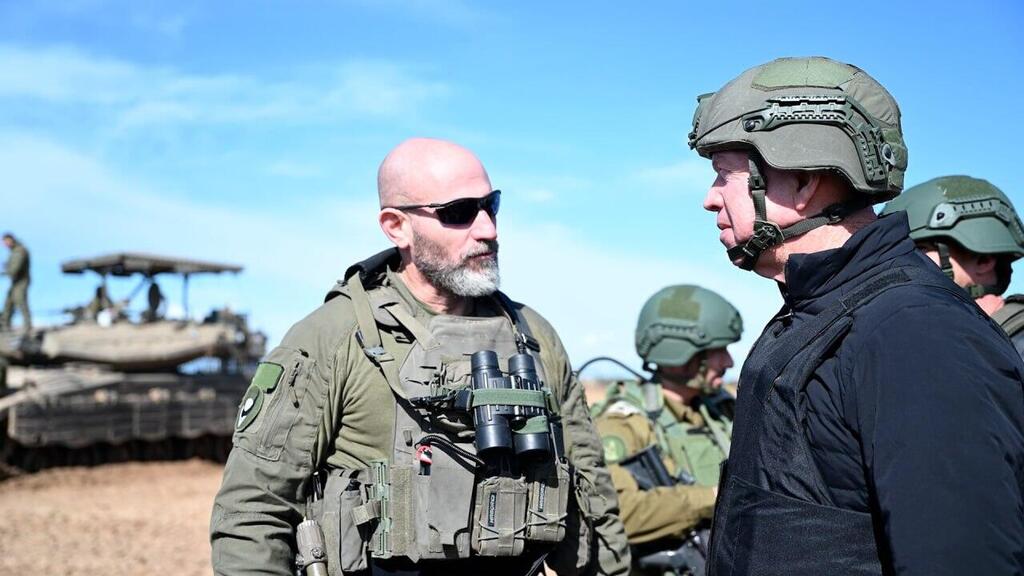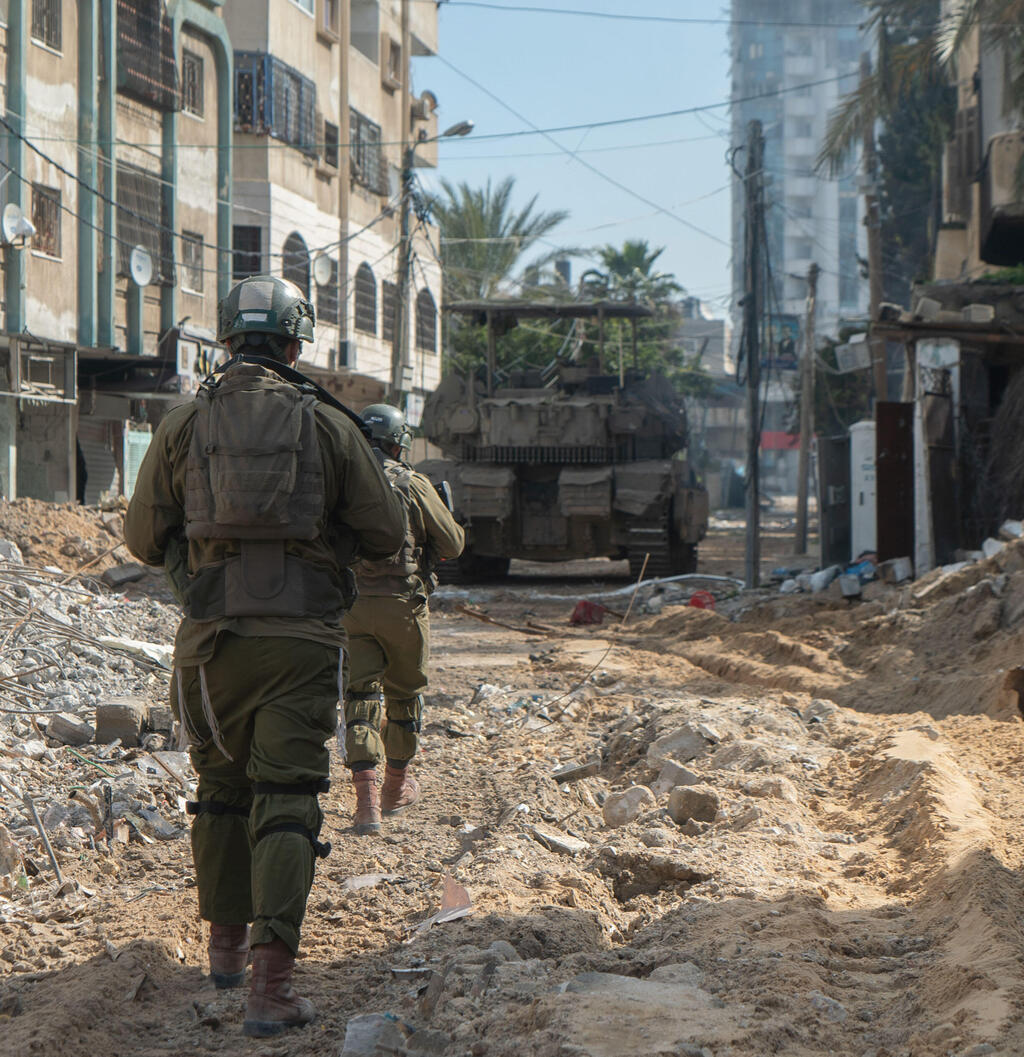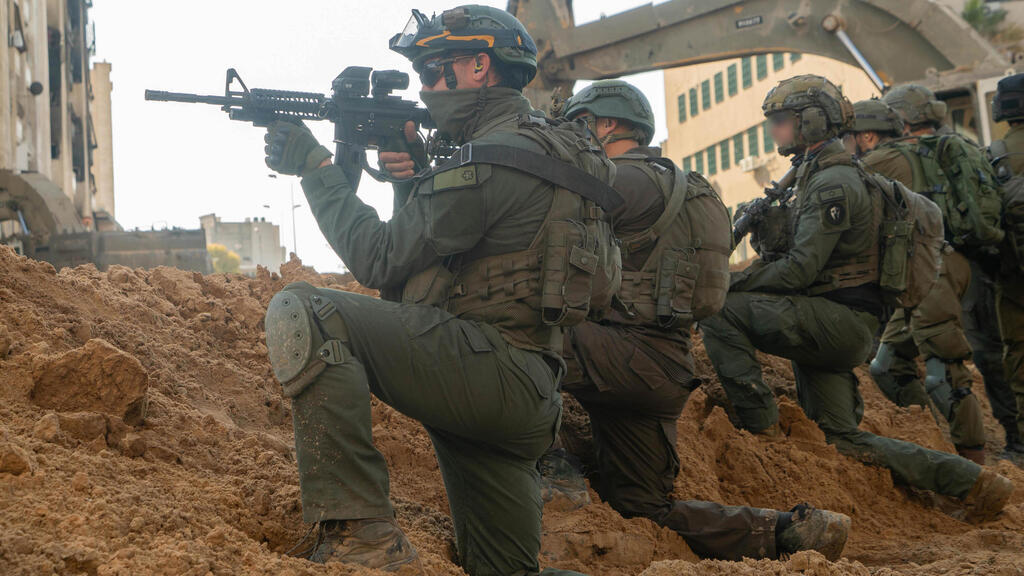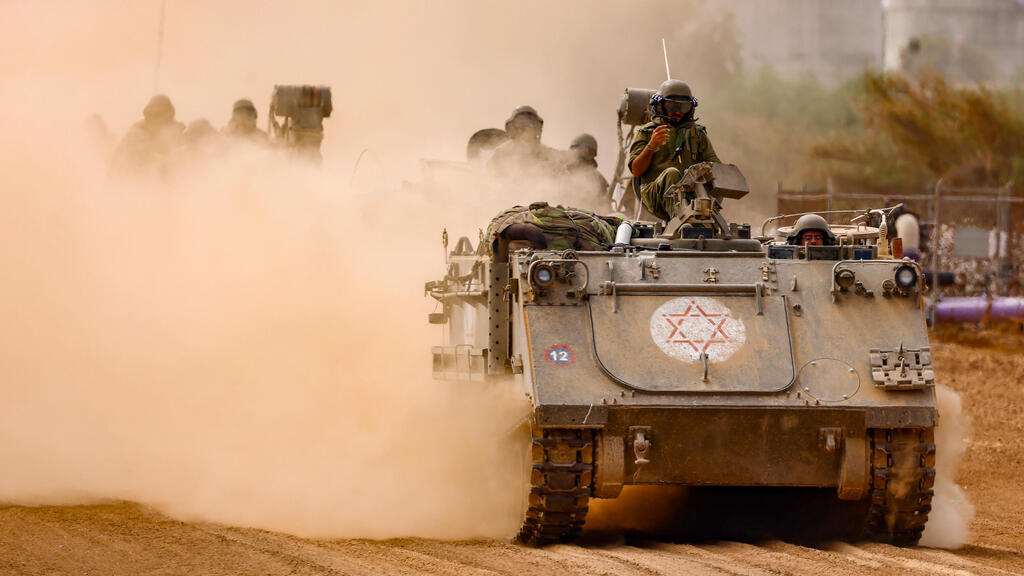Getting your Trinity Audio player ready...
The IDF on Wednesday marked four months since the beginning of the war against Hamas, and three and a half months since the beginning of ground operations in the Gaza Strip, which included a pause of nearly 10 days as part of a temporary cease-fire for the release of hostages.
More stories:
The army has achieved several impressive milestones, especially considering the Southern Command's lack of a concrete plan for occupying the Strip and toppling Hamas's regime. However, they have yet to achieve one of their primary goals: eliminating senior Hamas officials. An overview of the first four months of the war.
Tactical achievements
Currently, the IDF is focusing its operations exclusively in Khan Younis, targeting the western battalion of the local brigade, which is the last remaining in the area not yet neutralized. The 98th Division, which has been spearheading operations in Gaza's largest city for roughly two months, anticipates that this objective could be reached within a week.
This accomplishment would conclude the second phase of ground operations in the southern Gaza Strip. Subsequently, the focus will shift to the third phase, which began last month in the northern Gaza Strip and resulted in the elimination of about 300 terrorists, primarily in Gaza City.
In the remaining days of the operation in Khan Younis, 98th Division forces will continue to pursue two primary objectives: targeting and eliminating senior Hamas officials, including terror leader Yahya Sinwar and military chief Muhammad Deif, who remain at large, and intensifying efforts to locate and rescue hostages.
The IDF asserts that only through substantial military pressure from ground forces will Hamas be compelled toward another hostage exchange deal. In practice, daily discoveries of items and clues are progressively leading forces closer to the hostages' locations, even though, to date, those who have been located were found deceased.
The primary objective of the IDF during the first two phases of ground operations was to undermine Hamas's command and control capabilities and its military infrastructure, both above and below ground. This strategy stems from the understanding that without these capabilities, the terrorist group cannot carry out combat operations, ranging from launching rocket barrages and border attacks to conducting raids on Israeli border towns in the Western Negev.
Therefore, the focus has predominantly been on the tangible, material aspect of Hamas as a military entity - specifically, its military industry responsible for developing and producing hundreds of thousands of various types of weapons.
The IDF successfully located, uncovered, investigated and demolished these targets, despite the lack of advanced intelligence or adequate awareness of most underground bases and the extensive tunnel network before October 7. The bulk of information about them was acquired in real-time by infantry, armored and engineering forces.
However, beyond the daily tactical successes achieved by soldiers on the ground, a strategic victory remains elusive. The government has yet to address the "day after" scenario, specifically who will govern the two million Gazans once IDF forces withdraw.
Hamas has seemingly filled the vacuum, indicating a return to governance in areas from which the IDF has pulled out. The push for a long-term solution, specifically the re-establishment of settlements in the Gaza Strip, is being advocated by ministers from Likud and the Religious Zionist party. This proposal, the only one made so far, is understandably gaining support and momentum among soldiers stationed in the Strip.
The reluctance of the political leadership to take any political steps regarding the future of the Gaza Strip has been sharply criticized by reserve officers who participated in the conflict, as evidenced in a letter to decision-makers published on Ynet last month.
Unseen scope of use of reservists
The IDF has embarked on its longest ground operation in hostile territory, despite the slow pace and limited scope compared to operations in southern Lebanon. Reserve units, previously considered low priority by the General Staff, such as the 252nd Division, have been instrumental to the operation, working alongside elite regular divisions like the 98th, which are tasked with deep mission engagements.
The deployment of reserve battalions for essential missions in the Gaza Strip has surpassed the expectations and planning of any Southern Command general or General Staff officer.
The IDF swiftly revised its war objectives from aiming to eliminate or destroy Hamas to dismantling its operational capabilities. According to IDF estimates, roughly 17 out of 24 Hamas battalions have been dismantled, leaving mainly local squads of Hamas terrorists active in the field.
The battalions not yet dealt with by the IDF are located in areas where the operation has deliberately not been conducted, including Deir al-Balah and Nuseirat in the central Gaza Strip, and Rafah in the southern Gaza Strip. Rafah, known for its volatile nature, is situated on the arms smuggling route from Sinai along the Philadelphi Corridor, extending southeast to the border triangle with Israel.
The IDF has formulated a strategic plan for Rafah to counter the local Hamas brigade, which likely harbors senior Hamas officials who have sought refuge there. However, it was shelved for the remainder of the year. Implementation hinges on two prerequisites: Egyptian approval, potentially necessitating concessions to Palestinians in the Strip such as enhanced humanitarian aid or Israeli agreement for an official Palestinian entity to govern the Strip in lieu of Hamas, and the relocation of approximately one million Gazans from densely populated displaced persons camps in the north to Rafah.
4 View gallery


Defense Minister Yoav Gallant meets with IDF officers near Khan Younis
(Photo: Shachar Yurman)
Another, albeit secondary, condition is international legitimacy, spearheaded by the U.S., to reassume control over the Strip forcefully. The IDF has received an exceptional level of international support to date, especially following the October 7 atrocities. Assuming a prolonged cease-fire, part of a potential hostage negotiation, is established for a month or two, it will be essential to "recharge" international backing for operations in the Strip.
This effort might be complicated by U.S. concerns regarding the IDF-established buffer zone, which resulted in the demolition of thousands of Palestinian homes and the appropriation of farmland; Prime Minister Benjamin Netanyahu's refusal to plan for the "day after" and transfer authority to "moderate" factions other than Hamas; and the influence of the government's far-right flank on most decisions, including demands to reconstruct and repopulate the Gaza Strip with Israelis. These factors may challenge the renewal of support from the Western world, which, for now, has not urged Israel to hold its fire.
A low price, compared to the past
The IDF has reported 226 casualties in ground operations, a significantly lower figure than the high numbers suggested by a senior political figure during Operation Protective Edge in 2014. This leak from a classified briefing aimed to undermine public support for a ground operation against Hamas by highlighting the potentially high cost in lives, thus affecting perceptions of success or victory. Compared to past wars, such as the 121 deaths in the 34-day Second Lebanon War, the casualty rate in the current operation is relatively low.
IDF forces at the Gaza border
In the aftermath of the October 7 attack, senior Cabinet officials hesitated to launch a major ground war, with discussions leaning toward a limited operation against Hamas. Defense Minister Yoav Gallant advocated for a full-scale incursion, marking the first IDF presence on Gazan soil in three to four decades, even predating the 2005 disengagement.
Thus, the IDF initiated an operation prioritizing "the security of our forces comes before speed," advocating for cautious and deliberate actions. This approach emphasized targeting terrorist infrastructure like bases, firing positions, launchers and military factories while avoiding exhaustive searches for every tunnel and terrorist, given their vast numbers and tactics of blending with civilians or going underground.
The field commanders' strategic and innovative tactics, coupled with technological deceptions and unprecedented firepower, significantly contributed to the operation's success. Additionally, the advanced evacuation and medical treatment capabilities, unparalleled globally, played a crucial role in managing the approximately 2,000 wounded, including nearly 500 in serious condition, effectively reducing potential casualties.
The home front's resilience was another critical factor. Despite Hamas's rocket attacks on major cities and the devastating invasion on October 7, the Air Force's advanced defense systems, public adherence to Home Front Command instructions and effective countermeasures against Hamas in Gaza helped restore normalcy. This allowed Ben Gurion Airport to resume operations and the economy to remain active. However, it's essential to remember that Gaza, as Israel's secondary adversary, presents ongoing challenges, while the West Bank has remained relatively quiet for the time being.






